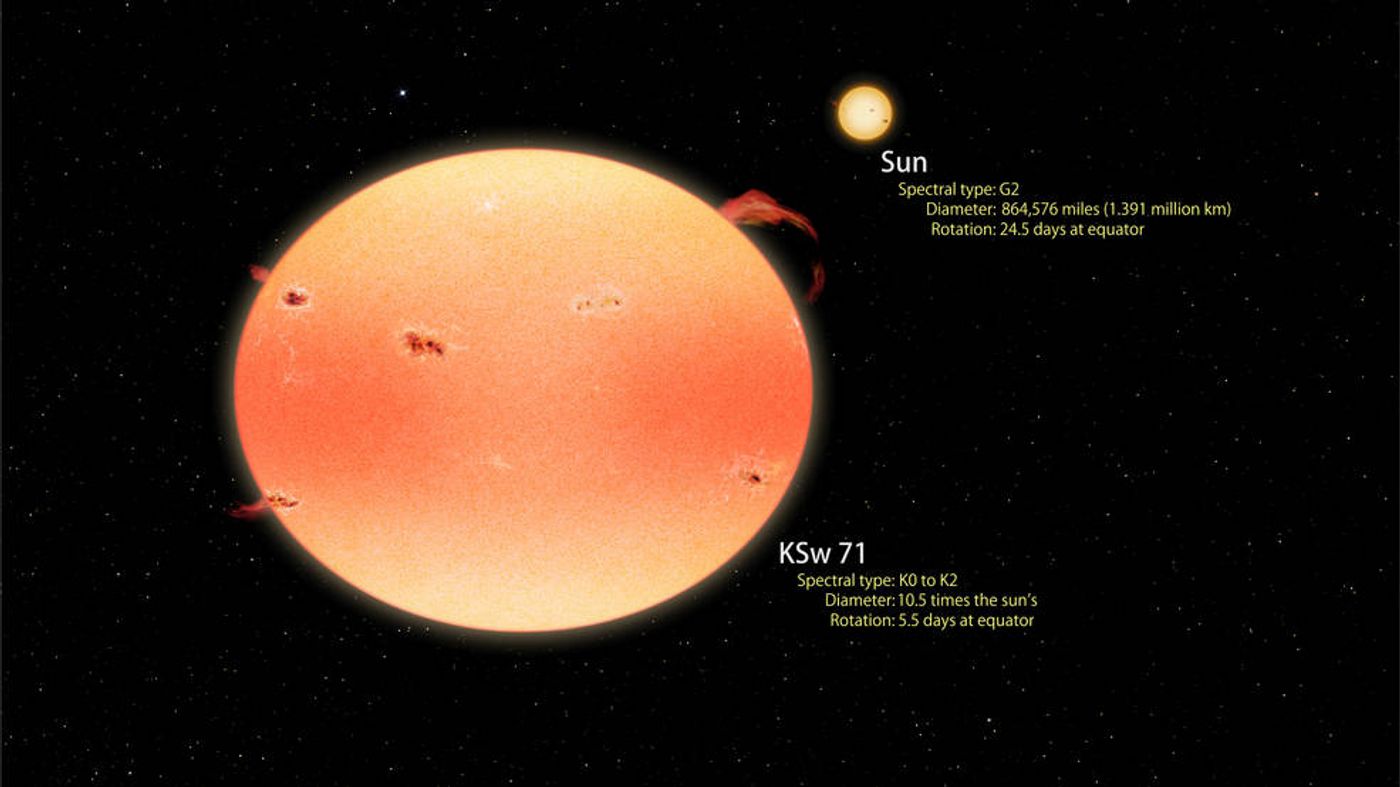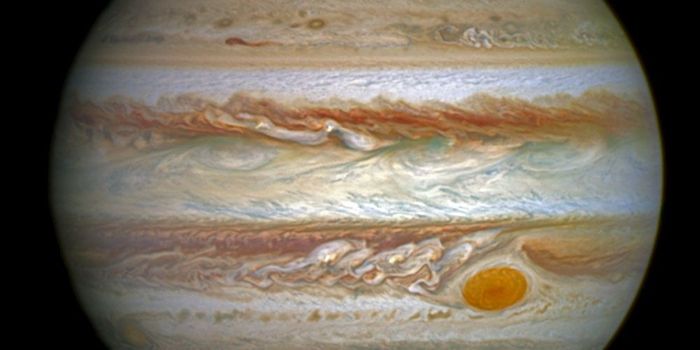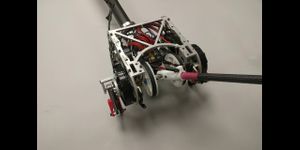NASA Discovers 'Pumpkin' Shaped Stars that Spin Rapidly
There’s a new kind of star in town, and apparently it's not nice and round like our Sun.
Using data obtained from a survey performed via both NASA’s Kepler and Swift missions, which involves studying a certain patch of the sky and taking note of some of the brightest sources in the sky, astronomers have stumbled upon a large orange giant star named KSw 71.

Image Credit: NASA's Goddard Space Flight Center/Francis Reddy
The findings appear in the Astrophysical Journal.
It’s elongated and is said to be about 100 times larger than our Sun. Its elongation almost looks makes it look like it’s pumpkin-shaped.
While the Sun completes a rotation every 25 days, KSw 71 reportedly rotates up to 4 times faster, taking no more than just 5.5 days. This high rate of rotation is believed to have an impact on its pumpkin-like shape, as centrifugal force takes place.
So what may have caused it to rotate so quickly like this? Astronomers can only speculate, but they have an idea.
NASA thinks it was once a binary star system, and over a course of a 100 million-year period, the two binary stars may have merged together to create what we see today. Although this sounds like a long time in human years, it’s not much more than a blink of an eye in terms of the cosmos.
More interestingly about the star is it gives off very strong X-ray emission, up to 4,000 times stronger than the Sun at its solar maximum.
This isn’t the only star in the universe that behaves like this, but it’s one of the brightest ever discovered. This new class of stars was discovered as a part of this mission, and astronomers actually found a number of stars similar to this one, ranging in temperature and size.
"Webbink's model suggests we should find about 160 of these stars in the entire Kepler field," said co-author Elena Mason, of the Italian National Institute for Astrophysics Astronomical Observatory of Trieste. "What we have found is in line with theoretical expectations when we account for the small portion of the field we observed with Swift."
It should be interesting to see what we might find by searching other parts of the sky, as the field of view we have looked at currently is quite limited.
Source: NASA








